Africa
Digital Agriculture to Fight Poverty in Africa
Published
2 years agoon
By
Nazmeen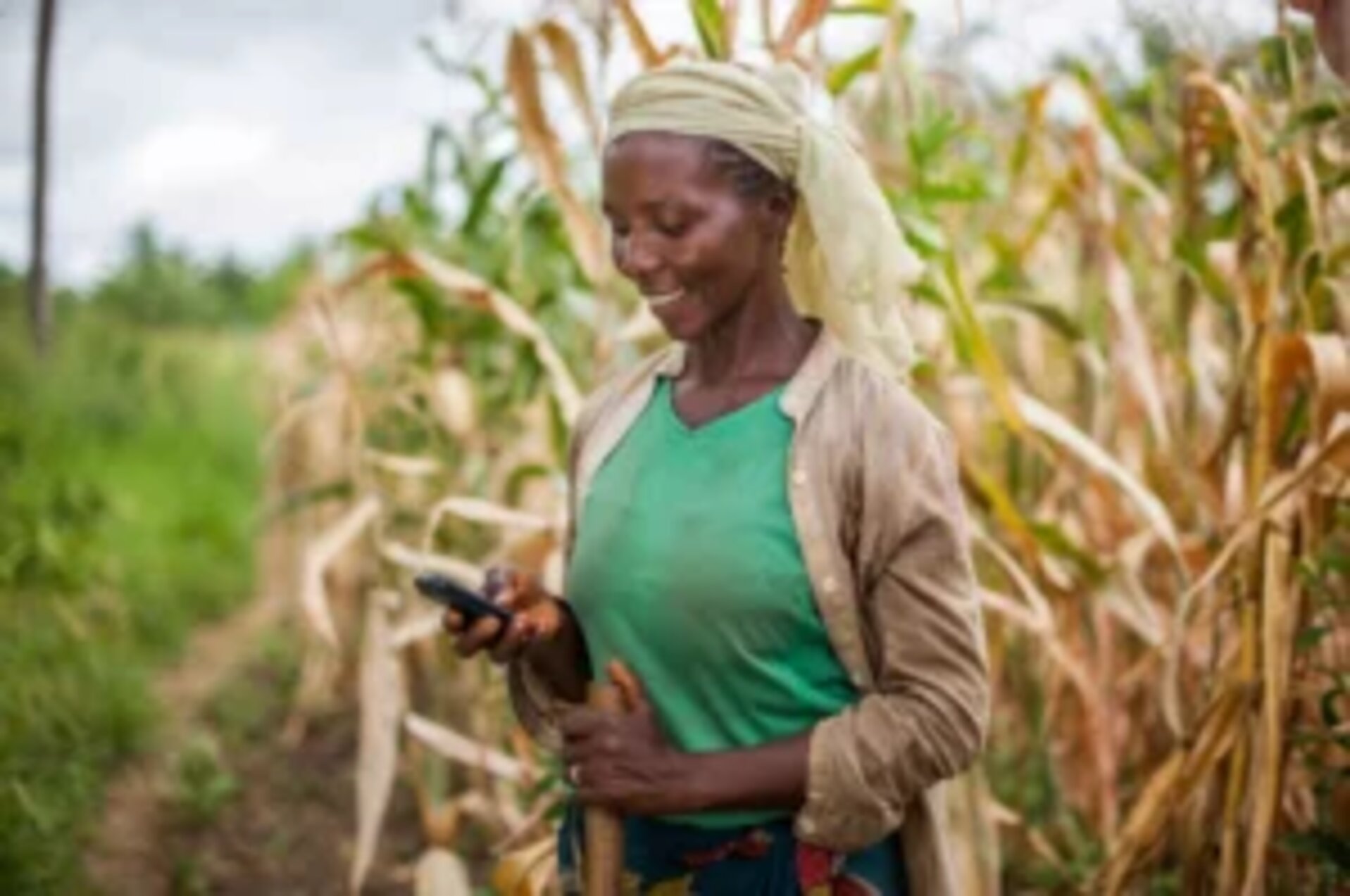

Pandemic like COVID-19 and Russia-Ukraine war shows the vulnerability and dependency of poor countries for food security. One in every five people in Africa is facing hunger. In the African continent, 283 million people are fighting hunger. In such a scenario digital agriculture can pave the way for food security and reduction in poverty.
Read More: Impact of Technology on Human Rights
Conditions are particularly worsening for East African countries like Sudan, Somalia, Ethiopia, Kenya and Uganda witnessing extreme hunger and poverty due to armed conflicts, weather conditions, drought and global food inflation and supply chain disruption due to the Ukrainian war crisis. African people are on the verge of dying from the shortage of food and nutrition.
Also Read: Human Rights on the Brink of Tragedy Due to a Severe Drought in the Horn of Africa
World Bank Groups developed a COVID-19 Household Monitoring Dashboard for measuring the impact of COVID-19 on smallholders of around 83 poor and developing countries. According to such surveys, 80% of households reported a decline in their income due to COVID-19 impacts. In Ghana, 76% of families whose main source of income was agriculture reported a decline in their income.
Agriculture contributes 23% of African countries’ GDP and is one of the major sectors of the economy. Around 60% of working population in Africa works in agricultural fields. That’s the reason why agricultural failure leads to more than 12 million children being severely malnourished due to food insecurity and 33 million people are at the gate of starvation due to food shortages.
Hence, the development of the agricultural sector can help African nations to see prosperity and become food secure. Further, it can help the rising population growth and reduce the burden of shortage of arable land in future.
Most farmers in Africa explained challenges regarding lack of information and access to markets and logistics, need for money, inputs, agronomic advice, and transportation facilities.
In such a situation, there seems a hope in digital agriculture, which is the combination of agriculture and technology. Technology can help farmers to become resilient to unseen and random shocks like the Covid-19 pandemic.
Digital agriculture is the flawless integration of digital technologies with livestock and agriculture management and other agricultural processes.
Various technological tools and techniques are used to collect and analyse data for predictive agriculture. Farmers can have fast, accurate and efficient decision making.
Technologies that are commonly used in digital agriculture are sensors, UAVs, communication networks, cloud computing, data analysis, artificial intelligence and machine learning and other advanced machinery and tools.
Food and Agriculture Organisation of the United Nations (FAO) mentioned benefits that can help small farmers are access to data, information, market, reduced operational costs, enhanced production and better supply chain management.
The younger generation especially wants to go for digital agriculture but they are unable due to a lack of training and funds.
Hence, Governments can provide finance, develop knowledge dissemination centres and provide skills to the larger population to adopt digit solutions for agriculture.
Governments and people need to realise the immense potential of digital agriculture for the development of the African region and its people.
Opportunities for Agricultural Revolution
Digital agriculture has multiple benefits throughout the agricultural food chain as documented in a report, “Digital Technologies in Agriculture and Rural Areas“, released by FAO.
- Management of resources can be highly optimised with high anticipation, traceability, and accuracy.
- Data and information can be readily available to the small farmers that will help them in the decision-making process.
- Real-time decisions can be made for the care and utilisation of agricultural inputs like fertilisers, seeds, water and manure according to the exact need and climatic conditions. It will reduce the wastage of resources and make the agriculture output less costly. Farmers can avail themselves more market price.
- Fields, crops and animals can be tracked at the farm level.
- The health of livestock can be tracked on a real-time basis with health devices attached to them. So that required care is given to them on time.
- Digital agriculture helps in developing agricultural systems that are highly predictable and productive and adaptive to climatic conditions.
- There are benefits to a clean environment and climate change as resource optimization would lead to less resource burden and wastage.
- People can reap social and cultural benefits as well with improved communication, development, peace and prosperity.
- Overall farmers can achieve success in higher food security, sustainable livelihood and overall improvement in living standards.
Challenges to adopting digitalization
There is no denying that digital agriculture can change the landscape of the African economy. But it is also true that it would need dramatic changes in farming systems, communities’ mindsets, rural ways of doing agriculture, and resource management. This would definitely be a challenge and requires systematic and holistic efforts from the top to down level. International Organizations like FAO, UNO, and World Bank Group, national Governments, domestic NGOs, knowledge centres, research groups, universities and farmers at large need to be adaptive and supportive. They need active collaboration and communication to make things a reality.
Also Read: The African Great Green Wall
Funds, knowledge creation and dissemination, and skills development are the important milestones to look after.
Conditions for implementing digital agriculture systems
Following are the bare minimum conditions that can be fulfilled to transform the agricultural sector towards more efficient and productive farming systems through digitalisation.
- Development of basic ICT infrastructure.
- Provide education in ICT.
- Government policies and plans to support digital strategies and e-programs.
- Spread the use of mobile, internet and social media.
- Make the farmers aware of agriculture entrepreneurship and digital innovation.
- Establish partnerships between agriculture research scientists working in labs to the farmers at the agricultural grounds. So that farmers can take knowledge and help from the scientific knowledge and skills while scientists can get the real time and behavioural data and feedback directly from the grounds to direct research more towards the local needs of the farmers.
- Government can establish incubators and accelerators programmes to impart skills to the farmers to better utilise digital technologies at the farms.
- Further, the government can provide easy access to equity funds and loans to the farmers.
Key Takeaways
Successful introduction and implementation of digital technologies in the agriculture sector depends on government support to provide enabling social, economic and policy infrastructure to fully develop the digital agricultural ecosystem in the countries. As technology makes changes with high disruptions, it takes time for society and economic systems to adopt changes and hence they change progressively. Hence, a balance can be created by the government to make an environment for the uptake and effective utilisation of digital agriculture.
You may like
-




Africa: The Long Wait For COVID Vaccine Far From Over
-




Africa: How China’s Huge Investments Are Sinking The Continent Into Debt
-




Chocolate chains: the dark truth behind the chocolate industry
-
Conflict Effects on the Palestinian Gender Relations
-
Is Africa’s Education on a deathbed?
-

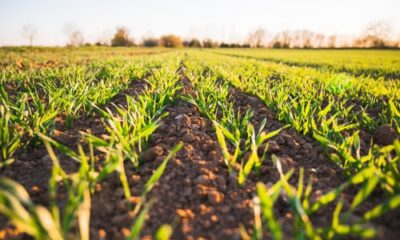


Fascist Groups Use Greenwashing To Target Farmers in Germany
Africa
Sudan Crisis Explained: The Violence that Stunned Humanity
Published
10 months agoon
July 2, 2023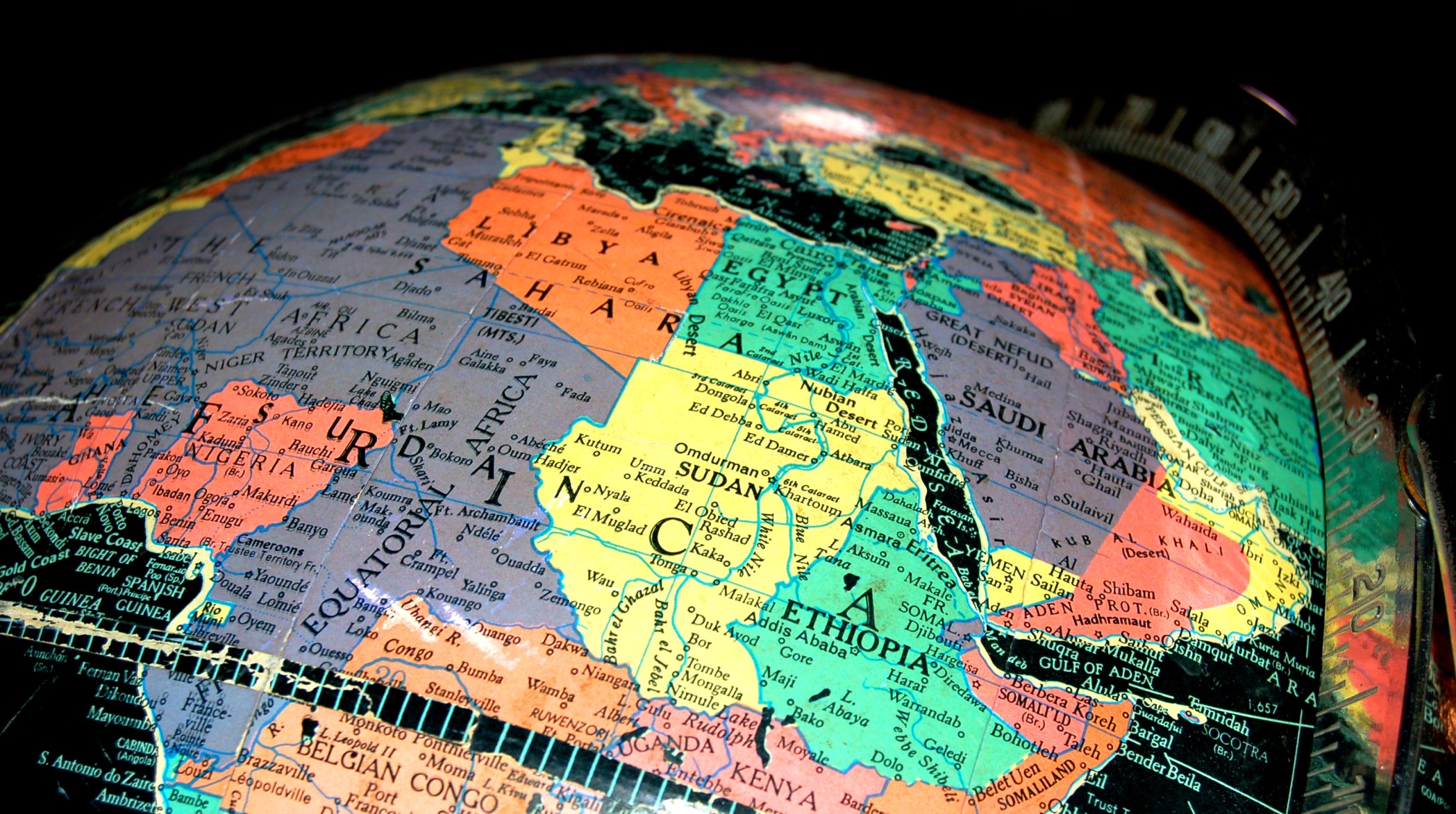

Sudan Crisis – The northeastern African nation is on the brink of collapsing as high fighting continues between the Sudanese Armed Forces and the Rapid Support Forces (RSF).
The ongoing collision has affected more than 1 billion people, killed hundreds, and turned Khartoum’s capital into a war zone. The civilians are migrating to the neighboring countries of Chad, Libya, Ethiopia, and Egypt to shelter and protect their lives.
Under solidarity, the Sudanese Armed Forces and the Rapid Support Forces agreed to allow civilians to leave the war zone. Moreover, they also agreed to allow humanitarian aid to enter and process the relief operations for the injured.
But what led Sudan to the catastrophic war today? Here’s an explainer:
What made Sudan’s Capitol a War Zone?
Sudanese people have struggled to establish a democracy after decades under the one-person rule.
Omar al Bashir came into power in the late 1980s after a brutal military coup. He became the country’s president, ruled for 30 years before the populace erupted, and sought his resignation.
Omar al Bashir resigned after the former military coup, and the Sudanese Army took over Sudan. But people didn’t want them to rule or be in charge of Sudan either. So after immense pressure from the protestors, activists, and demonstrators, the Army agreed to share powers.
The Army led by Abdel Fattah AL-Burhan agreed to share powers with different political groups in the transitional government. It was intended to oversee the shift to a democratic system. However, the people of Sudan’s’ fortune have some time else in their destiny. After two years, the Army removed the new prime minister and seized power again.
With the Army in power, the people of Sudan seemed trapped and in limbo. With no clear path or trajectory to rule the country, the armed force and political group representatives have been in ongoing talks to make the transition happen again. However, the transition process held up due to underlying revelry between the Army and the Rapid Support Force that became the Second Army.
Also Read: Threat To Famine In South Sudan
The Friends that Become Enemies
The effective leader of the country AL-Burhan, and the leader of RSF, General Mohammed Hamdan Dagalo, aka Hemedti, were friends initially. For years both were on the same stage and joined hands after the war in Darfur (2003 civil war). Hemedti led a militia at the time known as Janjaweed; they were used by Al-bushir’s (the former president of Sudan) Army.
The Janjaweed help the Al-bushier army fight rebels in the Darfur region and protect the upper echelon of the Army and senior commanders. However, they were accused of war crimes in Darfur, and AL-Bashir was charged with committing genocide in 2013. Hence, in 2013 Hemedti led the militia to rebrand themselves as the Rapid Support Forces and worked with the Army on different missions.
Moreover, al-Burhan and Hemedti joined hands and planned to overthrow Omar al-Bashir, the country’s longtime leader, in 2019.
Besides, they planned a revolution in October 2021, upending the tenuous transition to civilian administration that had been initiated.
Gen Dagalo has said, in a series of tweets, that Gen Burhan’s government were “radical Islamists” and that he and the RSF were “fighting for the people of Sudan to ensure the democratic progress for which they have so long yearned.”
The international community must take action now and intervene against the crimes of Sudanese General Abdel Fattah Al-Burhan, a radical Islamist who is bombing civilians from the air. His army is waging a brutal campaign against innocent people, bombing them with MiGs. 1/4
— Mohamed Hamdan Daglo (@GeneralDagllo) April 17, 2023
Though the friendship does not last for long, and Gen Dagalo, aka Hemedti, force becomes more powerful. During the pro-democracy protest against Al-Bashir, the RSF force and Army were accused of killing hundreds of people.
In the tweets, Hemedti stated: “The international community must take action now and intervene against the crimes of Sudanese General Abdel Fattah Al-Burhan, a radical Islamist who is bombing civilians from the air. His Army is waging a brutal campaign against innocent people, bombing them with MiGs.”
Also Read: The Egyptian Army in Sudan… What are the Reasons?
The War of Power in the Sudan Crisis
Since the killing during the pro-democracy protest, the Hemedti force has acted more independently and grown powerfully. Hemedti forces were able to establish vast investments in the resources within the country and outside, too, especially in gold trading.
So that brings us to the current Sudan crisis with the realization of the rapid growth of Hemedti force supremacies over Sudan. And expressive political ambition of Hemedti, Gen Al-Burhan led the Army and proposed integrating the Hemedti force into Sudan’s Army.
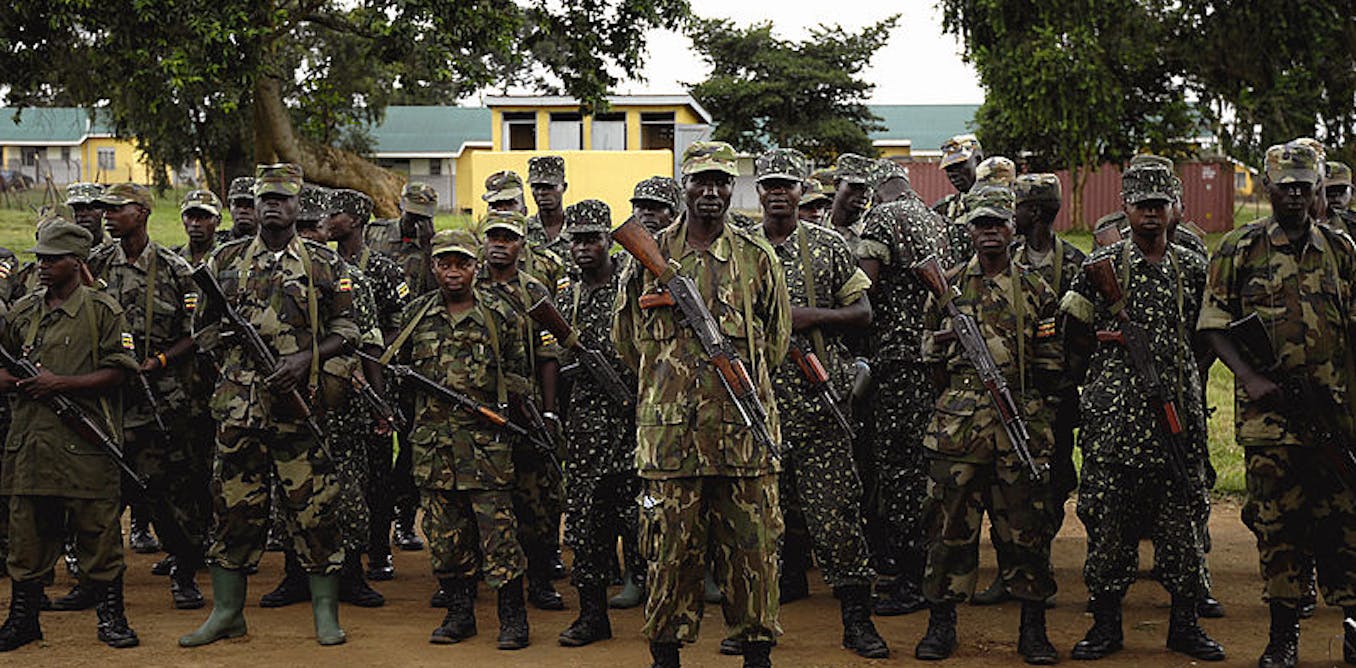

However, both heads were unable to agree on the timeline. The Army initially proposed two years of integration, while RSF wanted ten years.
It is unclear who started the fight, but on April 15, both sides began swapping accusations that they had attacked each other’s bases in Khartoum.
Slowly, they control the presidential palace, the airport, and the state TV channel. The RSF has no aircraft but a heavy army force with 10,000 men and anti-aircraft weapons. The Army has air power. They have been hitting the RSF residential areas bases in the capitol.
Both forces are fighting brutally and keep damaging the country’s resources alongside the life of millions of people. There have been plenty of calls to stop the war and take the talk to the table from Sudan’s neighbors. Additionally, despite the efforts of the African Union, the UN, the US, the UK, and the EU, there is no sign of backing up from either side.
The South Sudanese foreign minister was forced to mediate the war and reach a ceasefire agreement, but violations continued unabated. The two sides say they agreed to hold the talk, but they have repeatedly heard from the Army that conditions are set for these talks.
However, mass migration is escalating in Sudan with the acceleration in the humanitarian situation. The situation is already out of control; it’s now for big cats to intervene. The UN should take strict action and protect the rights of the people of Sudan.
Read Next: The Saudi-Iran Deal and its Implications
Africa
Predictable, Unpredicted – The Looming Threat of Famine in Somalia
Published
2 years agoon
October 24, 2022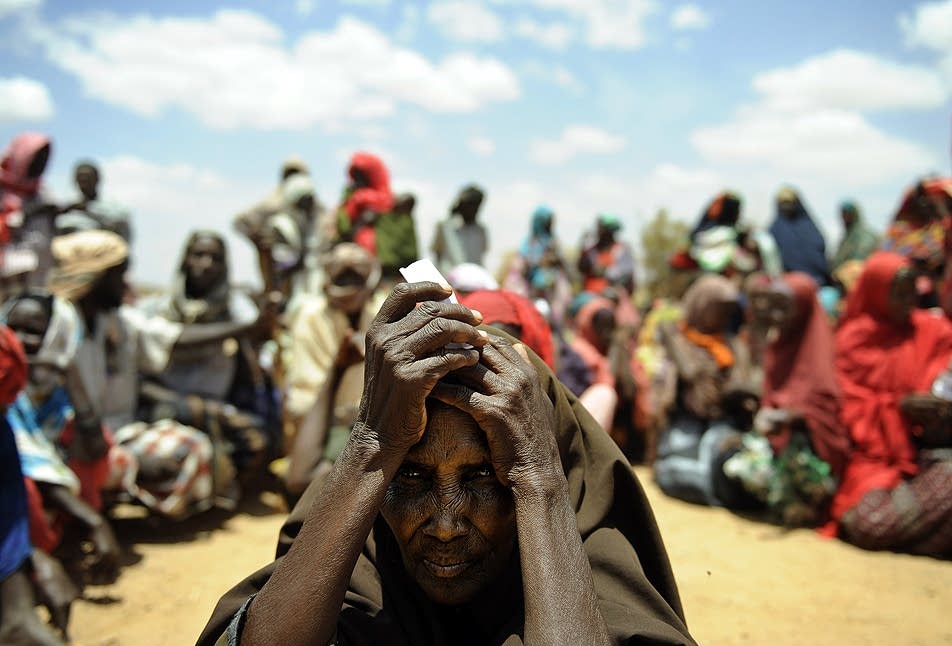

Famine is knocking at Somalia’s door, with nearly 8 million people facing extreme hunger daily. The threat is even more concerning with the UN’s head of humanitarian affairs warning that by the end of 2022, Somalia’s central and southern areas will probably be under famine.
But, how did Somalia reach here? Exactly how bad is the condition? And, is there a way out?
What Factors are Responsible for the Impending Famine in Somalia?
East Africa is going through the worst drought in decades, killing crops and making food unaffordable for many. But, Somalia, especially, is extremely unfortunate with a string of crises hitting the already starving country, one after another.
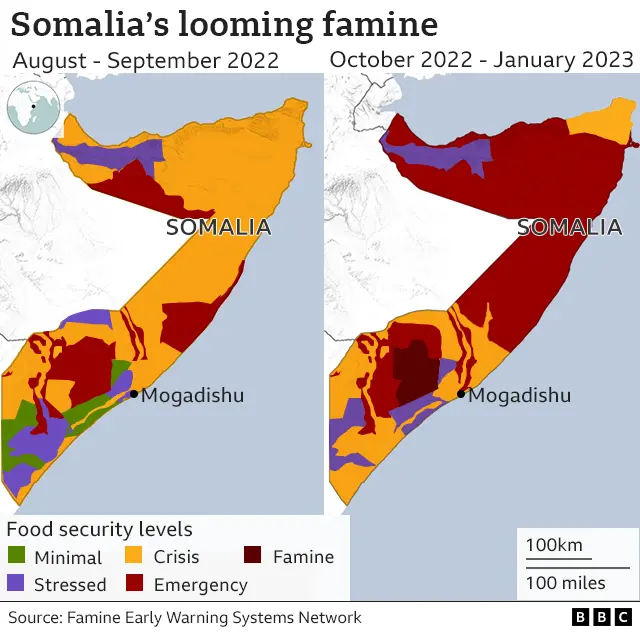

Water Shortage and Poor Hygiene
Today, 90% of Somalia’s country is experiencing water shortages due to recent below-average rainfall, marking the fifth unproductive rainy season.
Unfortunately, a lack of water has caused lung ailments, diarrhea, cholera, and other diseases to spread throughout the nation. In addition, people are forced to drink polluted water, thus, further increasing the risk to their health.
Along with inadequate sanitary facilities and poor hygiene, the country lacks access to safe and clean drinking water. As a result, since January and July 2022, more than 7000 instances of diarrhea have been documented, with 37 death, and 53% of those cases involving young children below two years of age.
Locust Infestation & Russia-Ukraine War
Not long after the Covid-19 effect subsided, Somalia was severely affected by the 2019–2020 floods, which wiped off the majority of the country’s crops and pasture.
This was followed by desert locust infestation, which wiped off the nation’s major meager crops and pastures that had survived the floods.
Moreover, over 90% of wheat supplies in Somalia come from Russia and Ukraine. And, the ongoing Russia-Ukraine has resulted in skyrocketing food prices, grain shortage, and starvation in many countries, including Somalia.
Political Unrest and Its Link to the Looming Famine in Somalia
When talking about factors accelerating hunger throughout Somalia, the country’s political unrest cannot be ignored.
Somalia is embroiled in a brutal civil war for more than three decades. And, its impact can be seen in the steep fall in agricultural production (Sorghum and maize ) since the early 1990s.
Additionally, Somalia’s relations with its neighbors are likewise unstable. The civil war between Somalia and its neighbor Ethiopia began in 2020 and has prolonged the drought and complicated the whole humanitarian effort in the area.
Experts estimate that over 0.9 million Somalians continue to live in unstable areas as the drought crisis worsens and in the region where active pockets of warfare are still present.
Somalia, Ethiopia, and Kenya are pushed into severe food crises due to civil war, climate change, and the unpredicted global economic situation.
However, climate change is the principal reason behind this worsening situation in Somalia and other countries.
How is Somalia’s Agriculture Affected due to Climate Change?
Global food security and agricultural productivity are urgently and continuously threatened by climate change. And the most apparent effect of climate change is on agricultural productivity.
Climate change has increased the frequency and intensity of extreme weather events, such as rising temperature and sea levels, changes in rainfall patterns, prolonged drought, extinction of groundwater, and land degradation.
Somalia occupies a region of around 6,47,540 km2 in the Horn of Africa. Over 16.9 million people call Somalia home, and 60% reside in rural areas. Besides, 65% of the total Somali GDP and employment is for agriculture and agricultural activities.
Variations in the climate primarily affect sorghum during the breeding or grain-filling stages, which results in crop loss. As Somalia has been severing affected by climate change, the country is experiencing high temperatures and brutal winds.
High temperatures and strong winds substantially impact sorghum yield. They primarily change the biomass accumulation rate and lengthen crops’ growing seasons.
Additionally, such hard winds and high temperature in Somalia is not only affecting the productivity of crops, but it also impacts on quality of crops.
Furthermore, sorghum yield is substantially impacted by the repeated failure of the rainy season in Somalia, which inhibits fertilization and causes the spikes to dry up throughout the flowering phases, reducing yield.
Heavy sessions of drought, high temperatures, and an increase in sea level have dried out the groundwater in Somalia. The water and climate change crisis in Somalia is not only affecting the breeds of humans, but it also influences the foliage development of plants, leaves, and trees.
Issues in providing humanitarian aid to the needy in Somalia
The death rate since May 2022 has significantly increased in Somalia. Today, one Somalian dies every 48 seconds due to hunger and the water crisis. Up to 7.1 million people are still in need of urgent humanitarian aid in Somalia.
There are around 3,80,000 refugees that are taking assistance in neighboring countries like Ethiopia and Kenya.
The primary issue of providing humanitarian aid to Somalia was the first warning issued by the UN was hit on deaf ears.
Many developed countries like the US and UK did not react when needed. Hence, the coordinated plan to rescue Somalia from upcoming famine received only US$56 million in the month of march. The amount that was supposed to be received was US$1.5 billion. The humanitarian aid is still yet to receive half of its approved amount.
The Internal Bias
Another issue in providing humanitarian aid to the needy is a bias among the people in religion, ethnicity, race, religious identity, and different caste.
According to the latest study, people who were previously affected due to famine are precisely those who have been involved recently. The study found that due to bias in previous famines, the minors were not accessible to humanitarian aid. And it is believed that many of them still will not receive cash, food, medical, and other assistance.
Famine in Somalia: The Uncertain Future that Awaits
Famine in Somalia has long been coming. At Mzemo, we have been hinting at the lack of funding and aid response. Now, the situation has gotten out of hand.
Somalia will face its fifth sequential unsuccessful rainy season, with a fifth set to occur during the next three months. Due to consecutive failed rainy seasons and land degradation due to climate change, Somalia is facing extreme drought.
On the other hand, Somalia’s situation is escalating rapidly due to the invasion of Ukraine and Covid-19’s after-effects. Moreover, the purchasing power has been considerably reduced and significantly deteriorated by the food crisis in many regions of Somalia.
But, amidst the crisis, Somalia’s new government is gleaming with a hope of better tomorrow. Speaking with BBC, Abdirahman Abdishakur says,
“We have a young population, an enormous diaspora, and vibrant entrepreneurial skills. So that gives us hope. It’s challenging, but we don’t have an alternative.
Africa
Pakistan Flood Puts Climate Injustice in the Spotlight: The Age of Catastrophe
Published
2 years agoon
September 19, 2022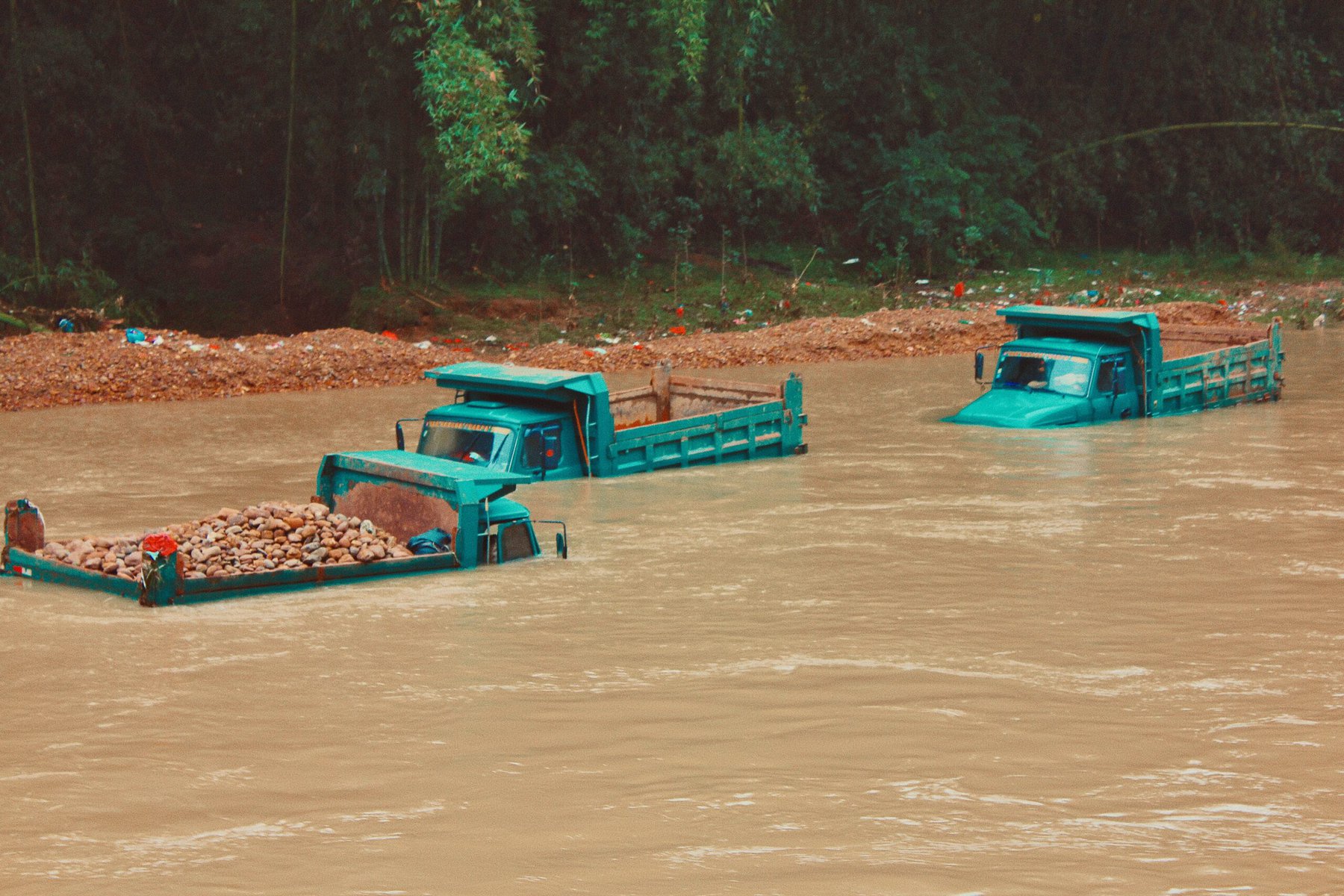

The fight against climate injustice: About one-third of Pakistan is currently underwater from floods. With over 1500 deaths, thousands injured, and hundreds of thousands displaced, the catastrophe unraveling is not something new.
From Uganda to Pakistan, extreme climate events are devastating the lives of millions of already vulnerable populations. Yet, while the low-income nations continue to suffer, wealthy countries watch in silence.
This is Mzemo’s The Age of Catastrophe and here’s how the Pakistan flood is highlighting the global climate injustice:
Pakistan’s Catastrophic Floods
Collapsed villages, millions displaced, and hundreds dead— the monsoon season this year is unravelling havoc. Across Pakistan, flooding induced by torrential rain (five to seven times the typical rain )that started in July and peaked in August has left millions homeless.
The devastation started with an extreme heatwave melting down snow from over Himalayan 7000 glaciers. Followed by heavy rainfall, causing massive flooding in mid-July, compounded by the melting glacier rushing downwards from the mountain.
I have never seen climate carnage on the scale of the floods here in Pakistan.
— António Guterres (@antonioguterres) September 10, 2022
As our planet continues to warm, all countries will increasingly suffer losses and damage from climate beyond their capacity to adapt.
This is a global crisis. It demands a global response. pic.twitter.com/5nqcJIMoIA
Since June, Pakistan has recorded over 15,000 fatalities and over 13,000 injuries. The aftermath of the flood will bring increased diseases, poverty, hunger, and massive rebuilding costs. Especially now when over a million houses are damaged or destroyed. Early estimates show the damage to cost over $30 billion.
“This whole year we have borne the humanitarian payload of other people’s carbon-rich lifestyles,”
Sherry Rehman, Pakistan’s federal minister for lcimate change
Soon scientists will find the root cause of the devastating floods and long-term climate change is definitely an undeniable reason. However, when it comes to allocating responsibilities for the climate-attributable costs, the true culprits will likely back off.
And Pakistan is not the only one. Countries around the globe are suffering from similar cases of climate injustice.
Countries Most Vulnerable to Climate Injustice
2022 has been a devastating year for the human-induced climate crisis. From drought in the horn of Africa to mega-fires and typhoons in the US, the world is amidst climate change catastrophes.
Even though the developing countries have done the least to contribute, they are at the forefront of climate catastrophe. Heatwaves and droughts have become unbearably frequent in Africa.
Then there are storms—the warmer the air, the stronger winds and rain across the tropics. And, by 2050, the sea level will have risen so high that floods that used to hit once in a century will hit various coastal cities every year.
The inequality of climate change comes together hardest in these vulnerable countries. Even though these people have barely contributed to global warming, they are amongst the most susceptible.
But, here’s the truth: building a climate-change resilient economy is expensive, and countries like Madagascar, Pakistan, Bangladesh, or Somalia don’t have enough funds.
These heart-wrenching cases are a few of the millions highlighting the sheer inadequacy of global superpowers in raising sufficient funding and the climate injustice at the heart of it all.
Finding the Culprits
The current carbon-emitting hotspots, including China, India, and Brazil, look less guilty when you realize that they have only recently become part of the problem. Whereas, the real culprits are not ready to accept how unjust climate changes are.
The inequalities that have brought one-third of Pakistan under water are not discussed enough. In addition, the world’s most significant carbon emitters have consistently failed to support climate change-induced loss and damage measures while also falling short on mitigation and adaptation efforts while committing to lessen the harm caused to the most vulnerable countries.
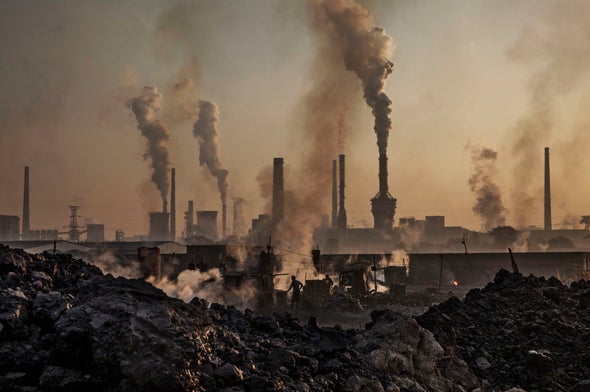

Research conducted in 2020 found that the Global North has emitted about 92% of the CO2 that has pushed the planet to today’s catastrophe. Whereas Asia, the Middle East, Latin America, and Africa together account for less than 8% of the emission.
Countries are also overspending their carbon budgets. According to Oxfam International, the wealthiest 1% produces twice as much as the poorest 50%. The two countries most responsible for the climate crisis, China and the United States, aren’t discussing climate solutions.
What's happening in #Pakistan is likely to be a catastrophic concatenation of multiple factors. Hotter planet means more air moisture (+7% each 1°C), leading to more extreme rain & greater risks of flooding. La Niña-induced rainfall can be unusually deadly https://t.co/nJzvdNw9og pic.twitter.com/eihsg8D38H
— Carbon Tracker (@CarbonBubble) September 12, 2022
But, the Pakistan flood has put climate injustice in the spotlight once again. A climate justice movement planned for street protests and meetings on September 9, 2022, in a number of nations across the world to show support for Pakistan’s flood victims.
It’s high time to realize that what’s happening to Pakistan will continue to repeat elsewhere. International cooperation is necessary to decent one another and put an end to climate crime.
Centuries-Old Injustice with a New Face
Be it climate change, slavery, or colonialism, and the rich and powerful nations are quick to dismiss their historical responsibility.
Yes, every country must decarbonize its energy system and focus more on sustainability. But, the rich and powerful countries frequently dismiss their historical responsibility, whether for colonialism, slavery, or climate change. All countries must decarbonize their energy systems and manage their land and ecosystems appropriately and sustainably.
However, the poor world will not forget the part that affluent nations played in causing today’s global climate crises. As the cost of climate-related losses rises, so will global calls for climate justice.
Trending
-



 Featured7 months ago
Featured7 months agoIsrael is Hiding Crucial Demographic Facts About Palestinians
-



 Featured6 months ago
Featured6 months agoWorld passively watching as Israel perpetrates open-ended massacre in Gaza
-



 Featured4 years ago
Featured4 years ago“Do Not Waste Water Even If You Were at a Running Stream” Prophet Muhammad
-

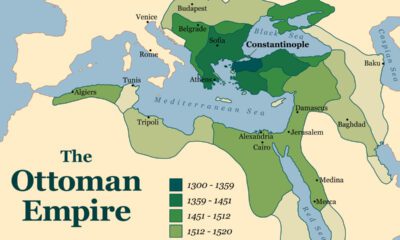

 Featured3 years ago
Featured3 years agoHistory of the Ottoman Empire
-



 Featured1 year ago
Featured1 year agoArgentina wins the World Cup; are there any other winners?
-

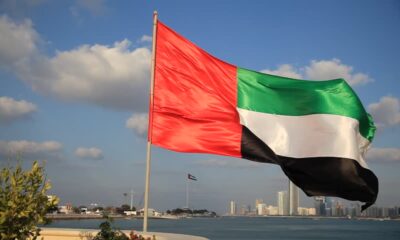

 Featured2 years ago
Featured2 years agoWorld Leaders Remain Silent Over Human Rights Violations in the UAE
-



 Featured3 years ago
Featured3 years agoFriendship is a Way For Jannah
-



 Featured4 years ago
Featured4 years agoPractical Ways to Fight Depression in Islam
